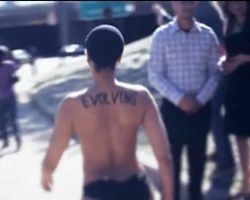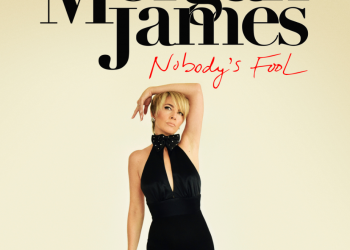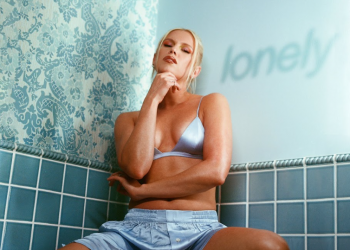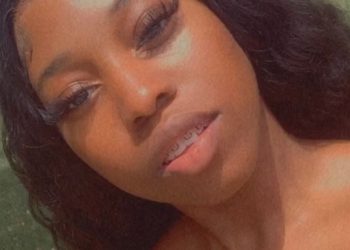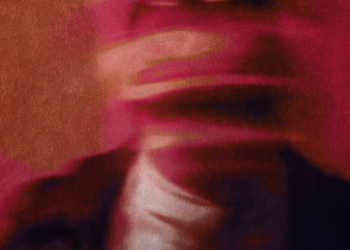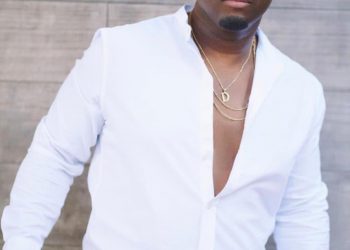Erykah Badu sent a strong message in the music video for “Window Seat,” the lead single from her soon to be released album “New Amerykah Part II: Return of the Ankh”. While Badu feels “liberated” now, she admits to being petrified when the actual video shoot, including a nude scene, took place. “I was petrified while shooting this video … but liberation began to set in,” Badu told fans on Twitter Saturday, March 27. “I conquered many fears in that few moments . i am greatful.” According to Badu, the video was completely real, with not a single adjustment, even when she strips down to nothing towards the end. “No closed set . no actors . everything was real,” says Badu. “window seat video notes: had intended to direct this vid alone.” Watch Erykah Badu’s video for “Window Seat” HERE on Singersroom. “New Amerykah Part II: Return of the Ankh” hits stores Tuesday, March 30.
Erykah Badu is no stranger to controversy. The Grammy-winning singer has been in the spotlight since her debut album, Baduizm, made waves in 1997 for its mix of neo soul and hip hop beats. But now, more than 20 years later, she’s facing a new kind of criticism: from fans who are outraged over her latest music video “Window Seat”. The video features Badu stripping naked at Dealey Plaza — the site of President John F. Kennedy’s assassination — while other bystanders watch in shock. While some may find this scene shocking or offensive, it appears that Badu herself was petrified by the experience; reports indicate that she had to be talked into filming such an intense scene. This article explores how fear factored into Badu’s decision to shoot the controversial sequence and what lessons can be drawn from this experience.
Background Of The Music Video
The music video for Erykah Badu’s song “Window Seat” features the singer stripping off her clothes and walking through a crowd of people in downtown Dallas, Texas. The controversial climax of the video comes when she stands completely nude in Dealey Plaza, where John F Kennedy was assassinated. This scene caused shockwaves around the world and gave rise to much speculation about what it meant and why Badu had chosen this location.
Badu has spoken openly about her intentions with the shoot. She wanted to make an artistic statement that would challenge viewers’ perceptions of nudity and public space by showing her body without any shame or fear. She also hoped to draw attention to how people are often judged for their choices regardless of whether those choices harm anyone else. Finally, she wanted to emphasize the importance of reclaiming one’s own freedom in order to create change.
Despite these noble goals, some were still appalled at Badu’s decision to film herself nude in such an iconic place as Dealey Plaza. In response, Badu expressed feeling “petrified” after learning that someone had been recording the infamous window seat scene on their phone while she was filming it. However, despite receiving criticism from many quarters, Badu stood by her decision saying that if anything good came out of creating art then it was worth it – even if it made some uncomfortable along the way.
Controversy Surrounding The Scene
The controversial scene of Erykah Badu standing nude in Dealey Plaza generated a lot of debate, both positive and negative. On one hand, some praised her for taking ownership over her body in such a public way and making an artistic statement about reclaiming freedom. On the other hand, many felt it was inappropriate to film herself naked at this historic site and that she should have found another venue for her art.
Badu’s feelings of being “petrified” upon learning someone had recorded the window seat scene further added fuel to the fire. There were questions as to whether or not any laws had been broken due to filming nudity on public property, even though Badu had obtained permission from the city prior to shooting. The fact that someone else was recording without permission raised questions around privacy rights and drew attention away from Badu’s original message of reclaiming freedom through art.
Despite all the controversy surrounding the scene, Badu has continued to stand by her decision saying that if it got people talking then it was worth doing – no matter what their opinion happened to be. It is clear that while there are still debates around its appropriateness today, ‘Window Seat’ made waves when it first came out and continues to make a lasting impression nearly 10 years later.
Conclusion
In conclusion, the music video for Erykah Badu’s single “Window Seat” created a great deal of controversy when it was released in 2010. It featured her walking around naked and lying down on a public street corner. Many considered this to be inappropriate behavior, while others defended its artistic merit.
I think that regardless of one’s opinion on the matter, we can all agree that Badu was brave to put herself out there like she did. She took a risk by expressing her artistry in such an unconventional way and that deserves recognition. Although some people found the scene offensive or disturbing, I believe it was ultimately an important part of the song’s message – which is simply about freedom from oppression and conformity.
Ultimately, Erykah Badu’s “Window Seat” music video serves as an example of how powerful art can be when it pushes boundaries and challenges societal norms. By daring to express something different and thought-provoking, she has opened up dialogue about censorship and our own personal beliefs surrounding what is deemed acceptable within society.
Since 2005, Singersroom has been the voice of R&B around the world. Connect with us via social media below.
